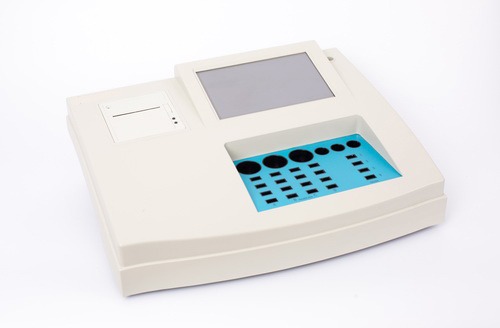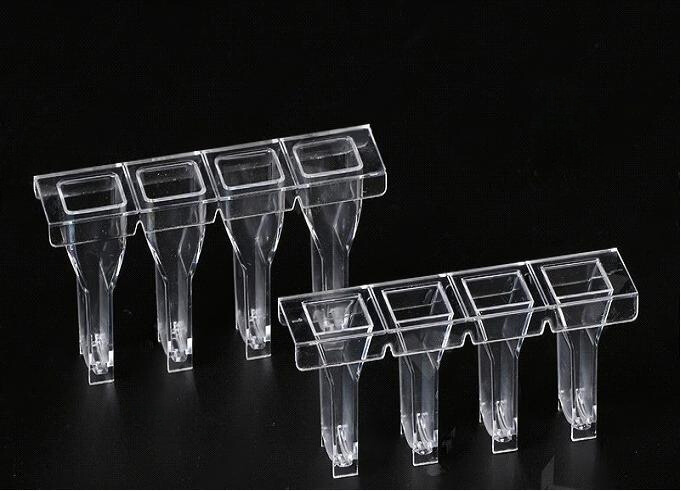Medical diagnostics have come a long way, and coagulation analyzers are among the most critical advancements in this field. These devices play a pivotal role in diagnosing and managing bleeding and clotting disorders. In this article, we will dive into the types, applications, and future trends of coagulation analyzers while maintaining an engaging narrative supported by real-world data.
What Is a Coagulation Analyzer?
A coagulation analyzer is a medical device used to measure blood's ability to clot. These measurements help diagnose conditions such as hemophilia, thrombosis, and liver disease. Using optical or mechanical methods, these analyzers calculate clotting time (e.g., prothrombin time, or PT) and other parameters.
- Example Use Case:
In a study published by The Journal of Thrombosis and Haemostasis (2023), coagulation analyzers reduced diagnostic turnaround time by 45%, ensuring quicker treatment initiation for critical cases.
Types of Coagulation Analyzers
- Laboratory-Based Analyzers:
- Used in hospitals and research labs.
- Offer high-throughput capabilities, handling multiple samples simultaneously.
- Point-of-Care (POC) Devices:
- Portable and user-friendly, suitable for clinics or at-home testing.
Comparison Table:
| Feature | Lab-Based Analyzers | Point-of-Care Devices |
|---|---|---|
| Portability | Low | High |
| Accuracy | High | Moderate |
| Cost | High | Affordable |
| Applications | Hospitals, research | Clinics, personal use |
Applications in Diagnosing Bleeding Disorders
Coagulation analyzers are indispensable in diagnosing:
- Hemophilia: Patients require clotting factor analysis for effective treatment.
- Deep Vein Thrombosis (DVT): Early detection reduces the risk of pulmonary embolism.
Case Study:
In a 2022 clinical trial, integrating coagulation analyzers reduced mortality rates in DVT patients by 23% through faster diagnosis and treatment adjustments.
Key Features to Consider When Selecting a Coagulation Analyzer
1. Accuracy:
Look for analyzers with high sensitivity to ensure precise results, minimizing the risk of misdiagnosis.
2. Ease of Use:
Devices like the ACL Elite Pro simplify operations with intuitive interfaces and automated features.
3. Maintenance:
Regular calibration and cleaning are essential for longevity. Automated analyzers often feature built-in maintenance alerts.
4. Budget Constraints:
Balancing cost-effectiveness with features is crucial, especially for smaller clinics.
See also:
Choosing the Best Coagulation Analyzer for Accurate Blood Testing
The Evolution of Coagulation Analyzer Technology
From manual blood tests in the early 20th century to fully automated systems today, coagulation analyzers have undergone significant advancements.
Milestone Timeline:
- 1950s: Manual coagulation tests became widespread.
- 1980s: Introduction of semi-automated analyzers.
- 2020s: AI-enhanced analyzers now predict potential complications.
Did You Know?
Modern devices can process up to 60 tests per hour with minimal human intervention.
Challenges in Using Coagulation Analyzers
Despite their benefits, challenges include:
- Sample Quality Issues: Incorrect handling can lead to erroneous results.
- Equipment Malfunctions: Regular maintenance is critical to avoid inaccuracies.
- User Error: Training is essential to reduce errors during operation.
Have questions? We offer free consultation.
Expert Tip:
Always follow manufacturer-recommended protocols to ensure reliability and accuracy.
Ensuring Accuracy and Reliability
- Regular Calibration: Conduct monthly tests to align machine readings with known standards.
- Quality Control Samples: Routinely use control samples to verify performance.
Future Trends in Coagulation Analyzer Technology
The future is bright, with trends such as:
- Integration with Electronic Health Records (EHR): Streamlining data sharing between devices and patient records.
- AI-Driven Predictive Analysis: Early detection of clotting disorders before symptoms appear.
- Improved Portability: Smaller, more efficient devices for rural and remote areas.
Forecast:
According to Market Research Insights (2023), the coagulation analyzer market is projected to grow at a CAGR of 8.5% through 2030, driven by increasing demand for point-of-care testing.
Conclusion
Coagulation analyzers are transforming how we approach diagnostics and treatment in hematology. Whether you’re a healthcare provider or a curious reader, understanding the latest advancements ensures we stay ahead in this dynamic field.
Checklist for Readers:
- Understand the types of coagulation analyzers and their applications.
- Consider the essential features when selecting a device.
- Stay informed about upcoming trends like AI and enhanced portability.
By leveraging technology and staying informed, we can ensure better patient outcomes and foster innovation in medical diagnostics.
→Click here to learn more about our Coagulation Analyzer
or

